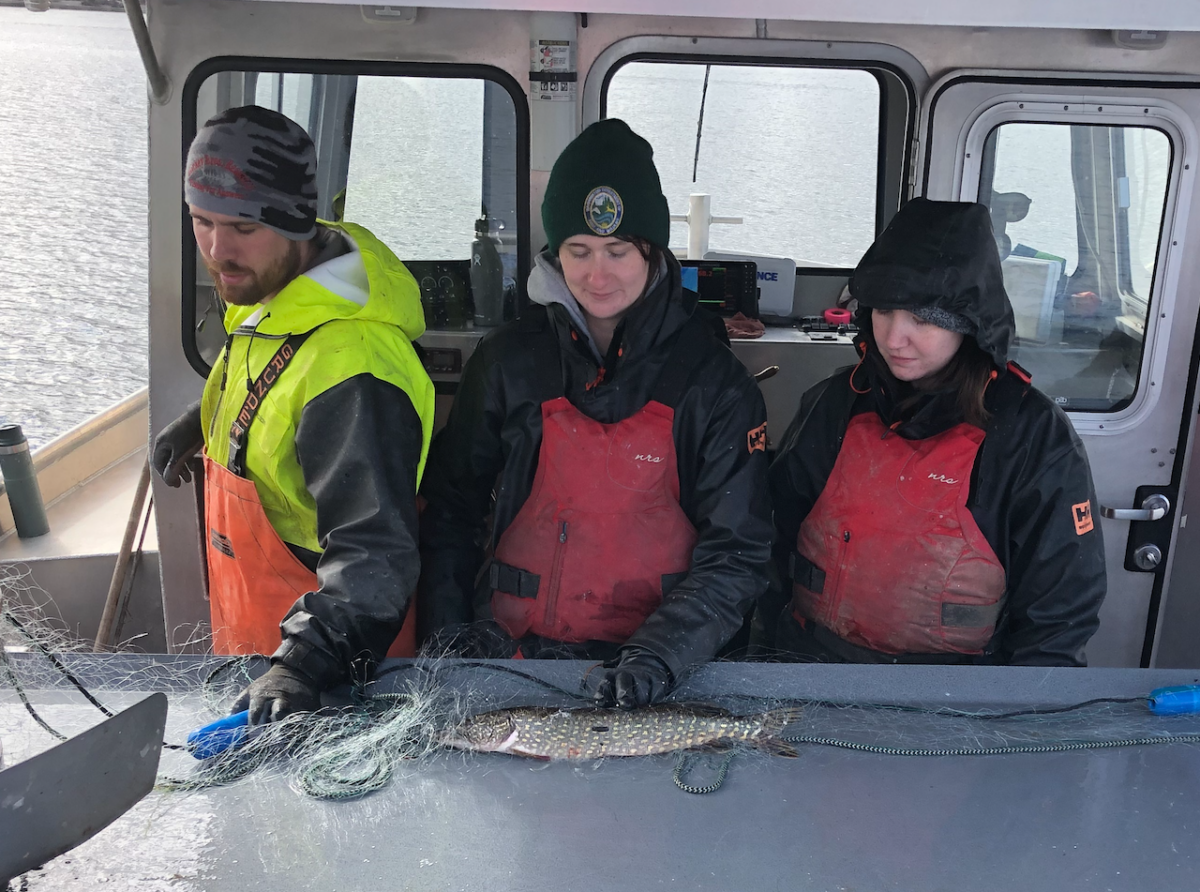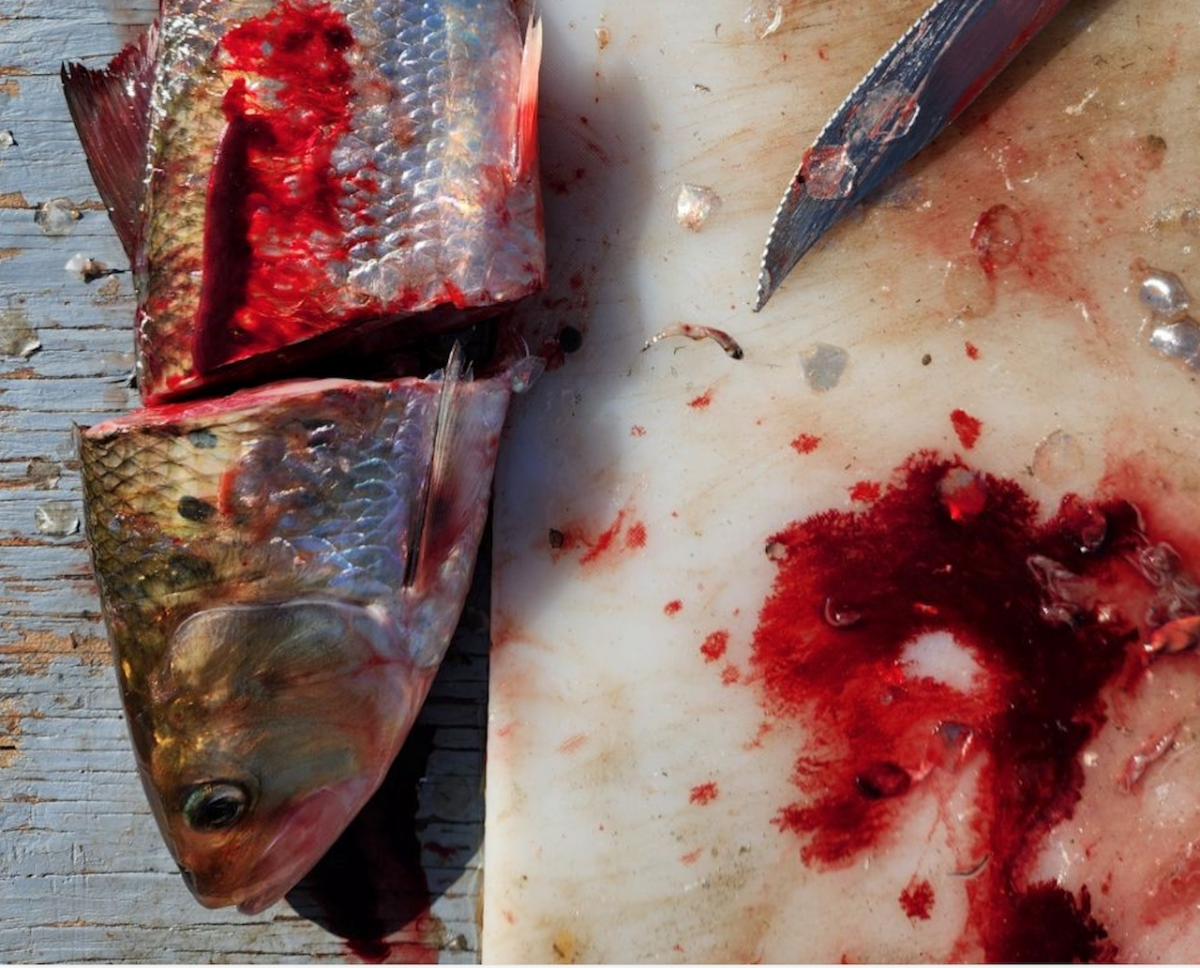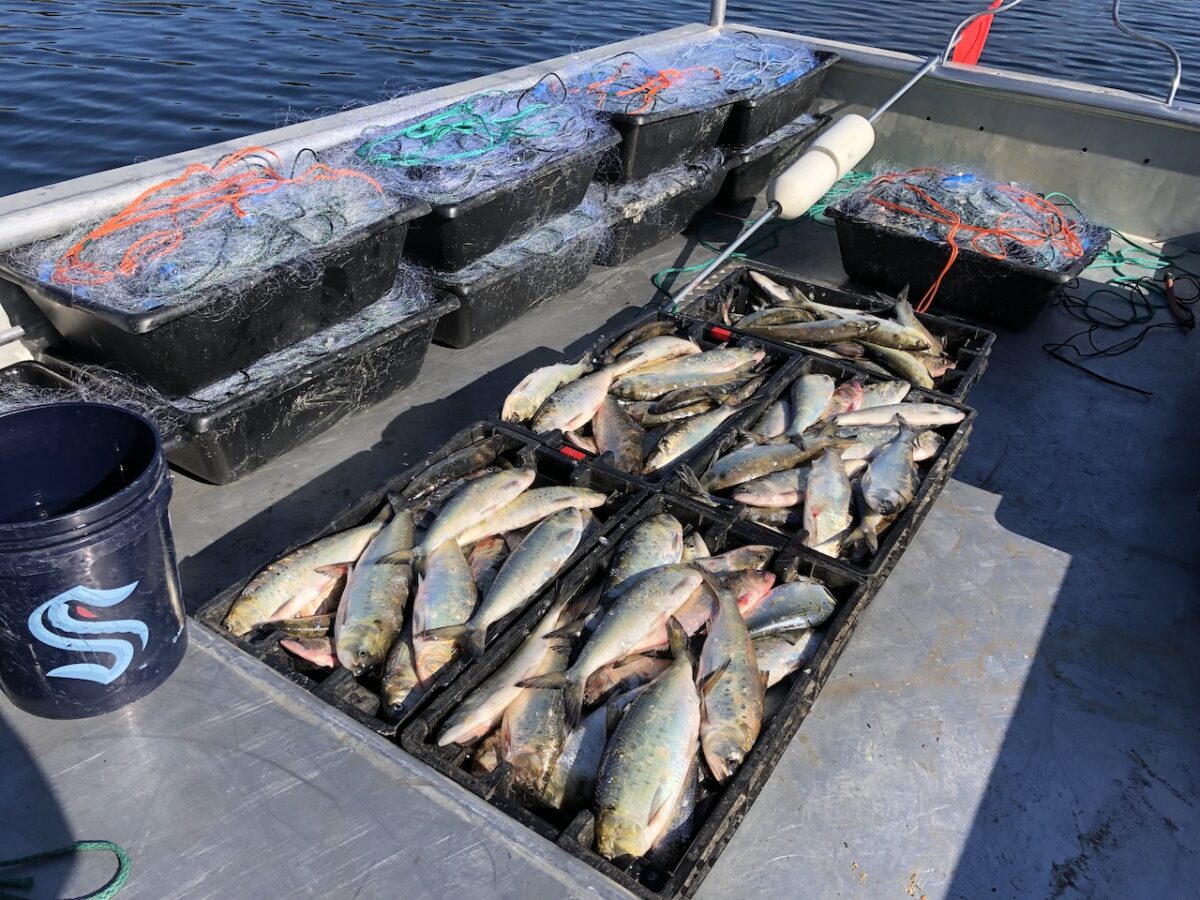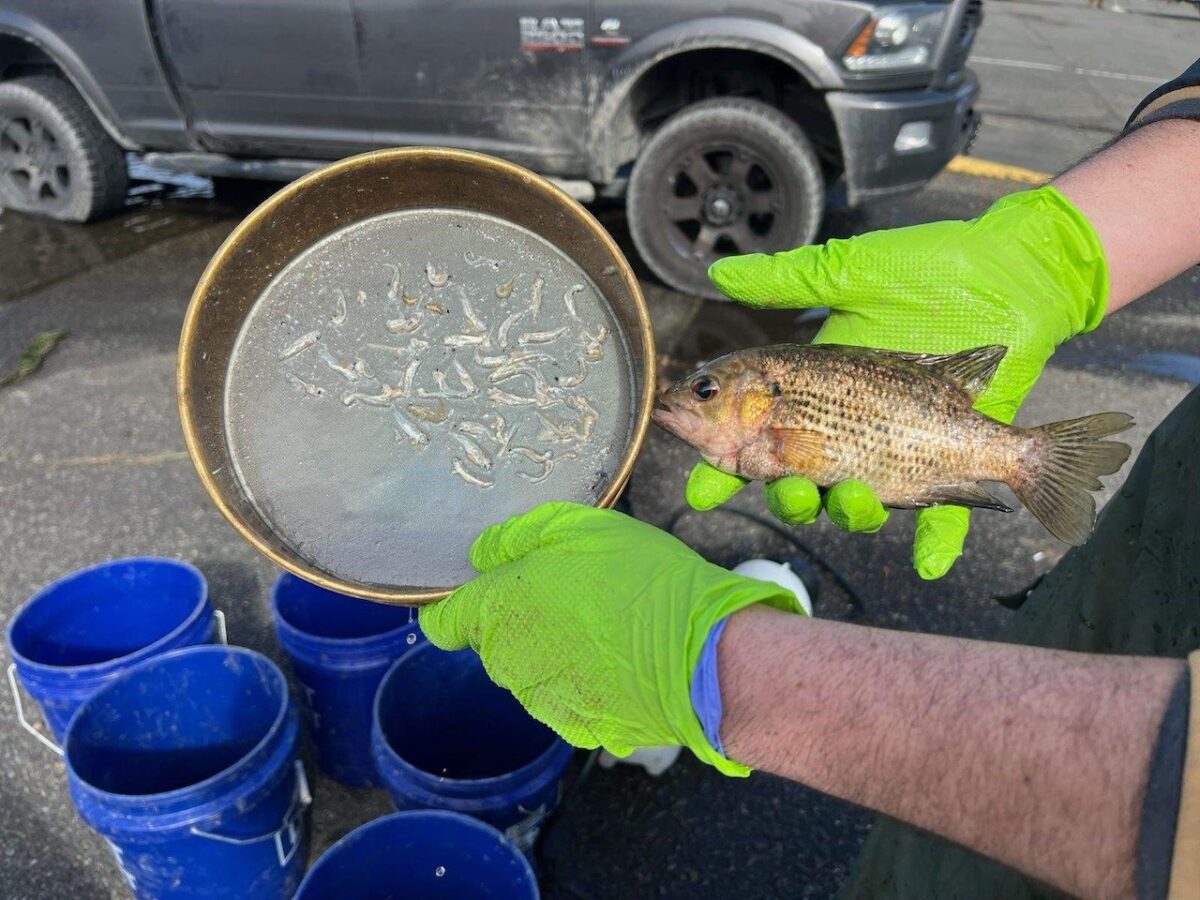
Ominous Catches During Lake Washington Gillnetting
WDFW crews report potentially worrisome catches on southern Lake Washington this week: a small northern pike, and salmon fry in the belly of American shad.

While at least a half-dozen pike have now turned up in tribal and state gillnets deployed on Lake Washington since 2017, the size of this one is concerning, while shad feeding on young salmonids has never been seen before.
Fisheries biologist Aaron Bosworth reports that two shad each had a single salmon fry in their stomachs, discoveries made just this morning.
“We thought they only fed on zooplankton before,” he stated.
Bosworth acknowledged it may be possible that the fry just happened to be sucked in by the shad as they fed on the microorganisms, but notes that the shad darts used to catch the fish on the Columbia and Willamette are about the same size, so it’s hard to say.

Either way, it’s worth looking into more given the sudden rise in the lake’s invasive shad population and increasing state, tribal and legislative efforts to protect and bolster its Chinook, coho and sockeye runs.
It’s not a priority at the moment, but WDFW does have plenty of fresh Lake Washington shad to examine to see how widespread salmonid consumption might be. Bosworth reports crews recently made a record single-day haul of five totes’ worth of shad – about 300 fish – and they’re catching a “good number” of them each day they gillnet.
“Last year we were only able to fill three totes on our biggest day,” he said.
Bosworth said shad appear to be “abundant” in Lake Washington so far this year, and they may be a shade bigger than those caught at this time in 2023.
It’s a puzzling new phenomenon: Last year’s WDFW catch of 1,200 shad was three and a half times as many as seen in all previous years combined back to 2015, when the first were reported.
Initial indications last year were that at least some of the shad appear to be rearing in the lake rather than going out to the Pacific like Columbia River system shad do.
The species was introduced from the Eastern U.S. to West Coast rivers in the late 1800s. Last year, an angler reported hooking four shad on Lake Washington’s Sammamish Slough, landing two.

AS FOR THAT SMALL, PERHAPS 2-YEAR-OLD northern pike also caught in Lake Washington this week, the best worst-case scenario is that bucket biologists are continuing to illegally dump the utterly unwanted species into the King County lake, while the worst worst-case scenario is that there’s now a spawning population.
Bosworth says the pike turned up Wednesday off Gene Coulon Park in Renton. The Muckleshoot Tribe has reported netting five others since 2017.
A bass angler also caught and released one in spring 2018, leading yours truly to advise, “Slash its gills, slit its belly, hack it in half, singe the carcass over high heat,” and offer a $50 reward for each one brought to me.
Perhaps the otolith of this latest pike will be able to tell managers whether it has lived its entire life in Lake Washington or was brought in from elsewhere in the Northwest. Water chemistry leaves telltale marks on the earbones of fish. Candidate waters include Lake Roosevelt, the Pend Oreille system, the lower Spokane River, Lake Couer d’Alene and now a pond on San Juan Island.
The shad and pike were caught while WDFW and the tribe performed netting on southern Lake Washington to assess what species are eating sockeye and Chinook fry exiting the Cedar River at Renton.
“Rock bass, which were not really known to inhabit the lake 10 years ago, are abundant everywhere now and eat large numbers of salmon fry near the mouth of the Cedar River,” Bosworth said of this year’s findings. “Yellow perch and black crappie are also abundant in the area around the mouth of the Cedar and feed on the salmon fry in that area as well.”

He said that plans call for netting the south end of the lake through at least the end of March before WDFW moves to the Lake Washington Ship Canal, the pinchpoint for salmon smolts trying to exit the system, in late May and June. State and tribal operations have been occurring for several years now.
In related news, the recently passed WDFW supplemental operating budget contains $700,000 more for the suppression of fish that prey on salmon in Lake Washington this coming fiscal year.
Elsewhere on the Western Washington northern pike front, WDFW now reports catching a total of nine at that pond on the west side of San Juan Island, where an angler hooked one in late February and his parents passed word to agency biologists.
“But we believe there are many more in Carefree Lake due to the difficulty of catching juvenile pike,” said spokesman Chase Gunnell late this morning.
He said crews would continue to net and try some electrofishing.
WDFW is also currently taking public comment on a draft interagency rapid response plan for northern pike.
“Preventative work done now will help to minimize the environmental, economic, and cultural resource impacts of northern pike later,” said Chris Donley, Region 1 Fish Program manager in Spokane said last week in a press release.
The plan states that the rest of the Lake Washington watershed is at “high risk of invasion” by pike due to the illicit release or releases.
